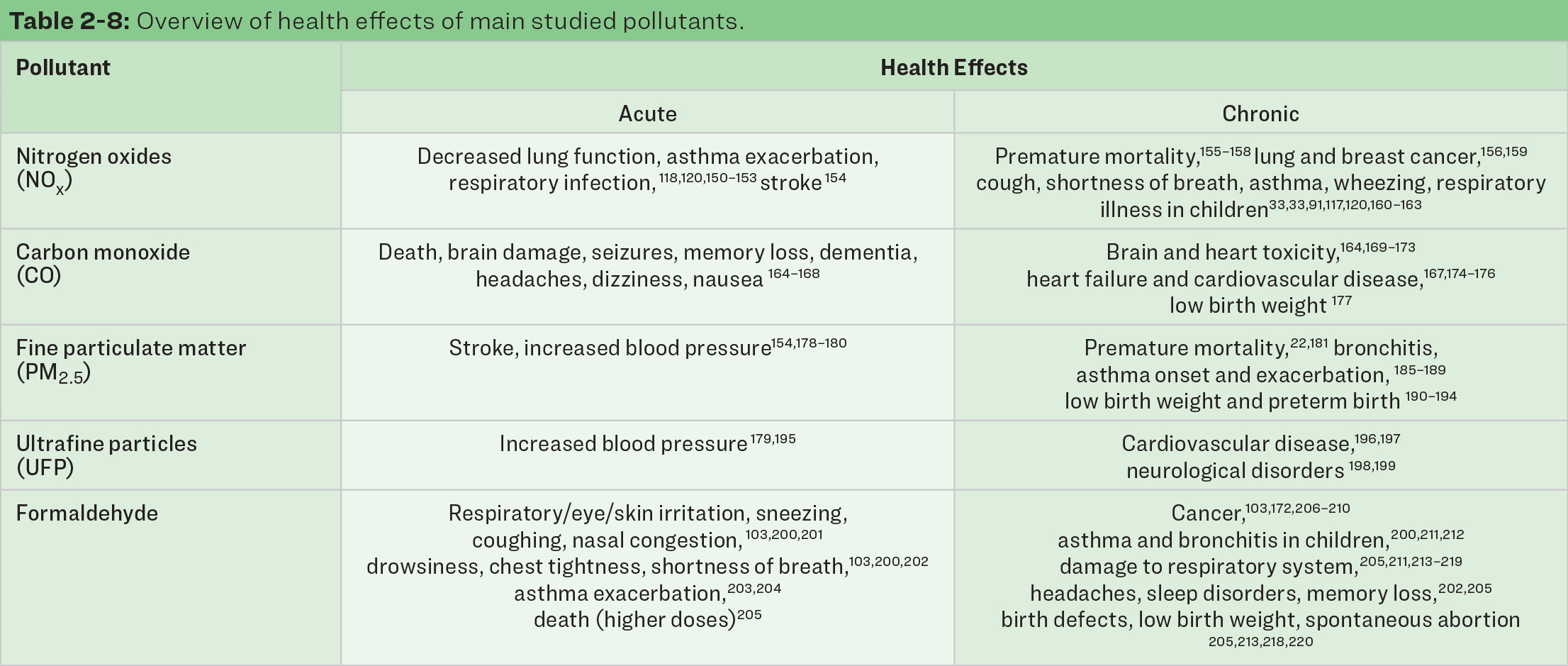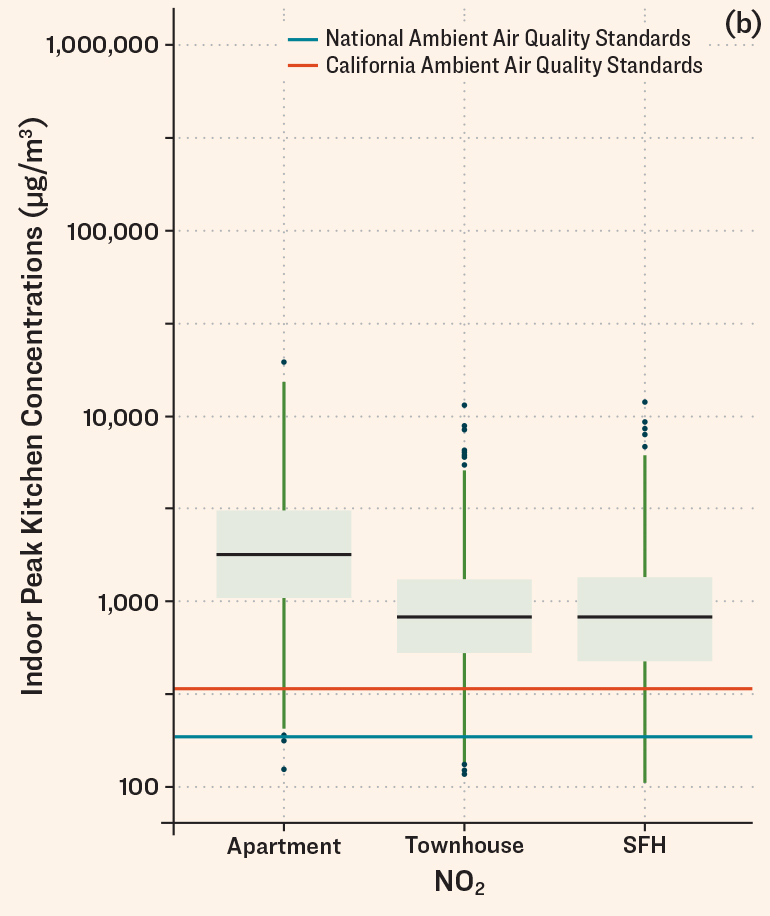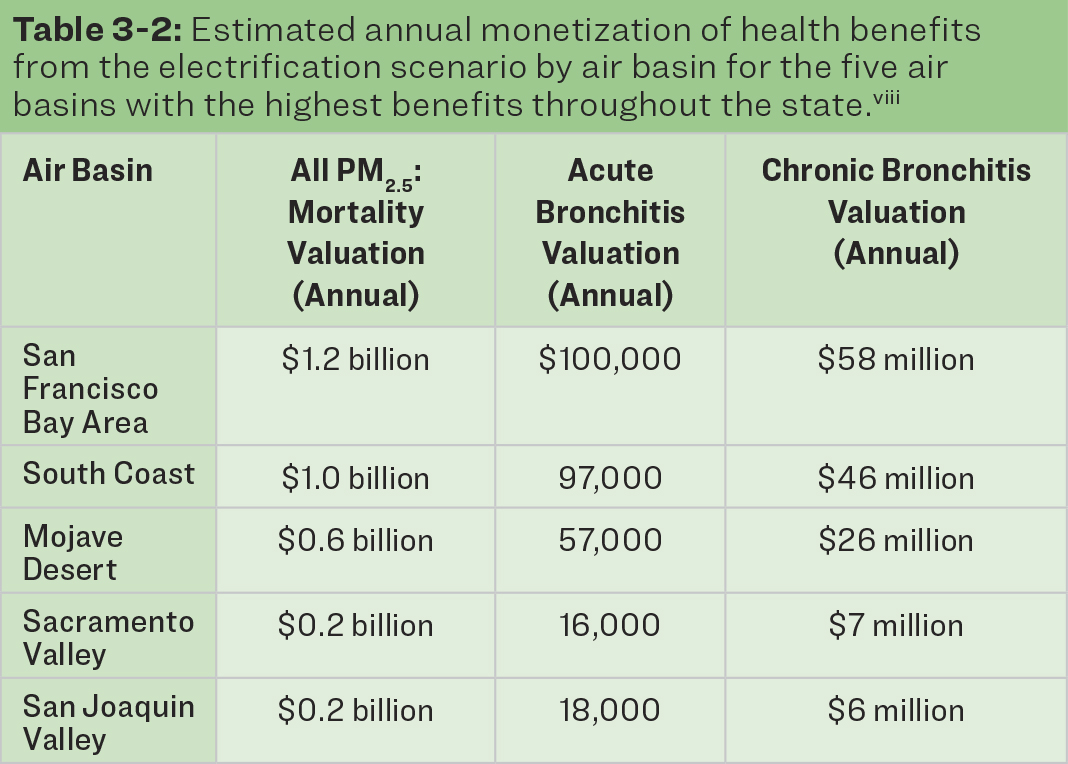Pollution from gas-fired appliances is bad for our health.
We're all familiar with the dangers of pollution spewing out of power plants and tailpipes. But the gas-fired appliances inside 90 percent of California homes also emit dangerous pollutants like carbon monoxide, nitrogen oxides, particulate matter, and formaldehyde.
A new report by researchers at the UCLA Fielding School of Public Health, “Effects of Residential Gas Appliances on Indoor and Outdoor Air Quality and Public Health in California,” shows how air pollution from gas-fired furnaces, water heaters, and stoves increases rates of respiratory illness, cardiovascular diseases, and premature death. Pollution from gas appliances also makes us more vulnerable to novel viruses like the one we’re now facing.
The first-of-its-kind report uncovers how much pollution comes from gas appliances in California’s homes, how this impairs people’s health -- especially the health of children, the elderly, renters in small apartments, low-income people, and people of color -- and the extent to which building electrification can help clean the air and protect public health.
Health effects of pollution from gas appliances
Gas appliances produce a range of air pollutants with both acute and chronic health effects. Acute health effects refer to impacts that result from immediate exposure to high-levels of pollutants, whereas chronic health effects refer to the impact of sustained (long-term) exposure.

Gas appliances pollute most California homes, especially smaller apartments
UCLA researchers found that stoves and ovens are the gas appliances that contribute most to indoor air pollution, since they are not typically vented outdoors like water heaters and furnaces. Nearly 70 percent of California homes use gas for cooking, yet less than 35 percent of Californians use range hoods, let alone have hood fans that effectively vent pollution outside.
UCLA researchers found that after cooking for one hour with a gas stove and oven, peak levels of nitrogen dioxide (NO2) inside the kitchen are so high they exceed both state and national outdoor acute air-quality standards in more than 90 percent of the homes modeled.
And the results are even worse for smaller households, where air pollution can become more concentrated. UCLA researchers found that after an hour of cooking on a gas stove, 98 percent of smaller apartments had peak levels of NO2 that exceeded these state and national air-quality standards. In other words, the air quality inside nearly every apartment was so bad that it would be illegal if measured outside.

Inhaling NO2 is extremely dangerous, especially for the elderly, who are more susceptible to lung disease, and children. Children exposed to elevated levels of NO2 are more susceptible to lung infections and allergies, and are at increased risk of lowered IQ, learning deficits, and asthma. In fact, a 2013 study found that children who grow up in a home with a gas stove are 42 percent more likely to develop asthma than those who don’t. But it’s not just kids who are at risk -- across all age groups, breathing in elevated levels of NO2 inflames the lining of the lungs and can cause wheezing, coughing, colds, flu, and bronchitis.
Gas appliances put us at risk of carbon monoxide poisoning
Most people are unaware that one of their carbon monoxide detector’s most important jobs is to keep them safe from pollution caused by gas-fired appliances.
Homes can reach unsafe levels of carbon monoxide when emissions backdraft from gas appliances. Backdrafting is the backward movement of exhausted gases into living spaces from ventilation ducts. This can be caused by depressurization from weather-related forces, open doors and windows, or mechanical appliances such as exhaust fans and furnaces. While we don’t know how frequently backdrafting occurs, we do know that residents with gas appliances are at greater risk of carbon monoxide poisoning.
Low-income and elderly residents may face increased risk of carbon monoxide poisoning from gas combustion appliances. A Lawrence Berkeley National Laboratory report found that residents living in small apartments with gas wall furnaces are more likely to face backdrafting and unsafe levels of carbon monoxide. Unmaintained gas appliances are more likely to improperly vent pollutants like carbon monoxide outside as well.
Breathing carbon monoxide is dangerous. It can cause headaches, dizziness, vomiting, and nausea, and, if levels are high enough, lead to death. Sustained exposure is linked with increased risk of heart disease. It is estimated that nearly 650 emergency department visits per year in California are due to non-fire-related carbon monoxide poisoning.
Gas appliances exacerbate California’s outdoor air pollution problem
More than 90 percent of Californians live in counties that received failing grades for their air quality. The American Lung Association’s latest “State of the Air” report found that, once again, California has some of the worst air pollution levels in the country.
Gas appliances worsen California’s outdoor air pollution burden. The UCLA report finds that in California, residential gas appliances -- mainly gas furnaces and water heaters -- release approximately 12,000 tons of carbon monoxide and 15,900 tons of NOx outdoors annually. For context, the NOx emissions from residential gas appliances are more than two times the emissions from all of California’s gas power plants. When NOx pollution from gas appliances in commercial buildings is included, the pollution levels from gas appliances are on par with the NOx pollution from all of California’s light-duty vehicles. That’s not to say we should just only eliminate the worst sources of NOx pollution: To protect our health and safety, we must decarbonize our buildings and transportation system and phase out gas plants. Otherwise, there is a risk of centralizing and increasing NOx, particulate matter, and ozone pollution in environmental justice communities living next to gas plants and highways.
In addition to the magnitude of emissions, UCLA researchers looked at where outdoor air pollution from residential gas appliances is the worst, finding that it is particularly problematic in air districts that already have some of the poorest air quality: South Coast, Mojave Desert, the San Francisco Bay Area, the San Joaquin Valley, and the Sacramento Valley.

Children, the elderly, and low income people are most at risk of air pollution from gas appliances
The report finds that several communities are especially vulnerable to pollution from gas appliances.
-
Renters, especially low-income renters, do not have the ability to control what kinds of appliances are in their homes and may be living with old, unmaintained, and improperly ventilated appliances. The report confirms that indoor air pollution is even worse when there is inadequate ventilation for gas stoves and wall furnaces. Studies find that many homes in the US, especially rental units, do not have range hoods or ventilation altogether.
-
Elderly people typically live in smaller homes, where air pollution can become more concentrated. They spend more time inside and may have existing conditions that make them more susceptible to health problems from air pollution. They are also less likely to be able to maintain gas appliances over time, putting themselves at increased risk of higher levels of indoor air pollution.
-
Children are particularly susceptible to the negative health effects of air pollution. They are more active than adults, so they breathe much more air into their lungs. Children also breathe in more air proportionally to the size of their bodies, since the surface area of their lungs relative to their body weight is larger than for adults.
-
Low-income people and people of color already experience the cumulative impacts of systematic environmental injustice and racism. They’re most impacted by California’s housing crisis and have the least access to healthcare. Additional exposure to pollution from burning gas only makes it harder for them to stay healthy. In addition, UCLA researchers found that the use of kitchen appliances for supplemental heating -- which evidence suggests is more common in low-income and minority households -- further increases exposure risks to unsafe air.
Gas-free, all-electric buildings help create healthier communities and stop the climate crisis
The good news? We need not be burdened by pollution from burning gas in our homes. Clean, zero-emission electric alternatives like heat pumps, induction, and modern electric stoves, can replace gas appliances.. And many communities are already choosing to build all-electric to protect public health and safety, lower energy bills and construction costs, and help stop the climate crisis.
The report estimates that if all gas appliances in California homes were immediately replaced with electric alternatives, the reduction of NOx and fine particulate matter outdoors would result in approximately 350 fewer deaths, 600 fewer cases of acute bronchitis, and 300 fewer cases of chronic bronchitis every year. This is equal to approximately $3.5 billion in health benefits over the course of each year.
The health and monetary benefits of electrification only grow as we factor in replacing propane and wood with cleaner electric appliances, as well as electrification of commercial buildings.
Once again, reductions in air pollution from electrification of residential gas appliances will benefit the communities that are now burdened with the worst air quality.

Beyond improving our health and air quality, replacing gas appliances with advanced electric alternatives will lower energy bills, make our communities more safe and resilient, and eliminate a major source of greenhouse gas emissions.
Tell California decision-makers to lead the state to a gas-free future
Californians will not be able to replace gas appliances in the state’s 14 million homes on their own. Assistance and guidance are needed from California regulators to ensure the transition from gas to electric happens at the necessary speed and scale, and that those who are most vulnerable to air pollution are prioritized.
Are you concerned about the impacts of gas appliances on our health? Sign a letter supporting stronger pollution standards: HERE.
Decision-makers at the state and local level all have an important role to play.
-
The California Air Resources Board is the state agency primarily responsible for protecting Californians from the harmful effects of air pollution. The agency should establish stronger indoor air-quality guidelines and recommend emission standards for gas appliances to help air districts achieve ambient air-quality requirements. The agency should also establish building decarbonization and electrification targets in the next statewide Greenhouse Gas Scoping Plan Update, including implementation guidance for partner agencies.
-
Air Pollution Control Districts are responsible for protecting our health from “stationary” pollution sources like gas appliances. Local air districts should update appliance emission standards to reduce pollution from everyday appliances, and create rebate programs to help residents (especially low-income residents) and businesses switch from polluting appliances to zero-emission electric alternatives.
-
The California Energy Commision has a vital role in setting standards for new construction and retrofits. The agency should ensure that the next building code update supports all-electric new construction and retrofits.
-
The California Public Utilities Commission can help ensure utilities make electrification affordable and accessible. It should require utilities to create electrification incentives, rates that encourage climate-friendly electrification, and new pilots and programs focused on electrification and upgrades for low-income homes.
-
City and county governments have played a leading role in slowing the expansion of the gas system. City and county governments should continue to adopt building codes that require or support all-electric new construction and retrofits.
For more on the benefits of electrification and policy options to accelerate equitable electrification, please see our report “Building Electrification Action Plan for Climate Leaders.”